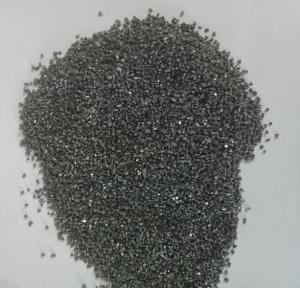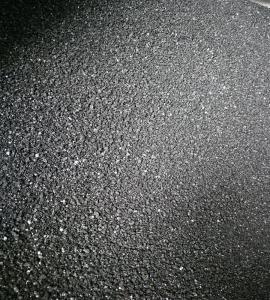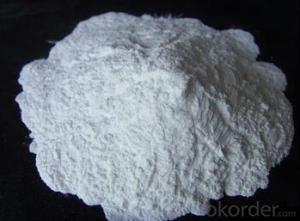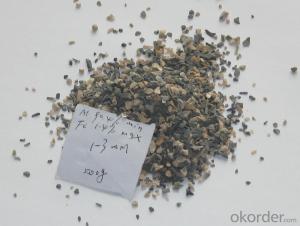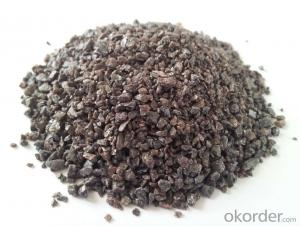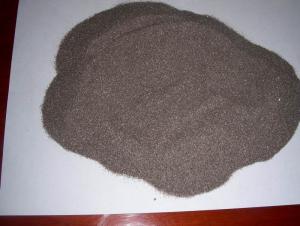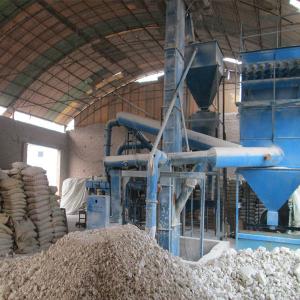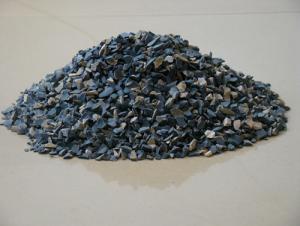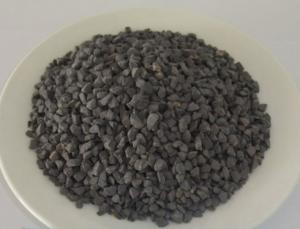Metallurgical Silicon Carbide 88 Granular Size 0-10mm
- Loading Port:
- China main port
- Payment Terms:
- TT or LC
- Min Order Qty:
- 25 m.t.
- Supply Capability:
- 500 m.t./month
OKorder Service Pledge
OKorder Financial Service
You Might Also Like
Product Description
Quick Details
Place of Origin: Ninxia, China
Application: Refractory, Steel making
Shape: Granule, Powder
Material: SiC, F.C
Chemical Composition: SiC, F.C
Product name: Silicon Carbide / Black Sic
Payments terms: 1. 100% L/C at sight 2. 30% T/T prepayment, balance against BL copy
Delivery Time: Within 30 days after receiving L/C or 30% T/T prepayment
Usage: Metallurgy, Foundry, Abrasive, Refractory, Deoxidizer
Advantage: Timely Shipment, High quality, Good performance
Packing: 25kg/bag, 1mt/bag or as customers' requirements
Size: 0-1/1-3/3-5mm,1-10mm, 100mesh etc
Sample supply: free sample
Color: Black
MOQ: 25Mt
Supply Ability
Supply Ability:500 Metric Ton/Metric Tons per Month
Silicon Carbide
Type | Chemical Composition | |
SiC | F.C | |
≥ | ≤ | |
SiC97 | 97 | 0.3 |
SiC95 | 95 | 0.8 |
SiC90 | 90 | 2.5 |
SiC88 | 88 | 3 |
Size: 0-1/1-3/3-5mm,1-10mm, 100mesh or as customers' requirements. | ||
Packaging & Delivery
Packaging Details1MT/bag or as customers' requirements.
PortTianjin port

Loading:
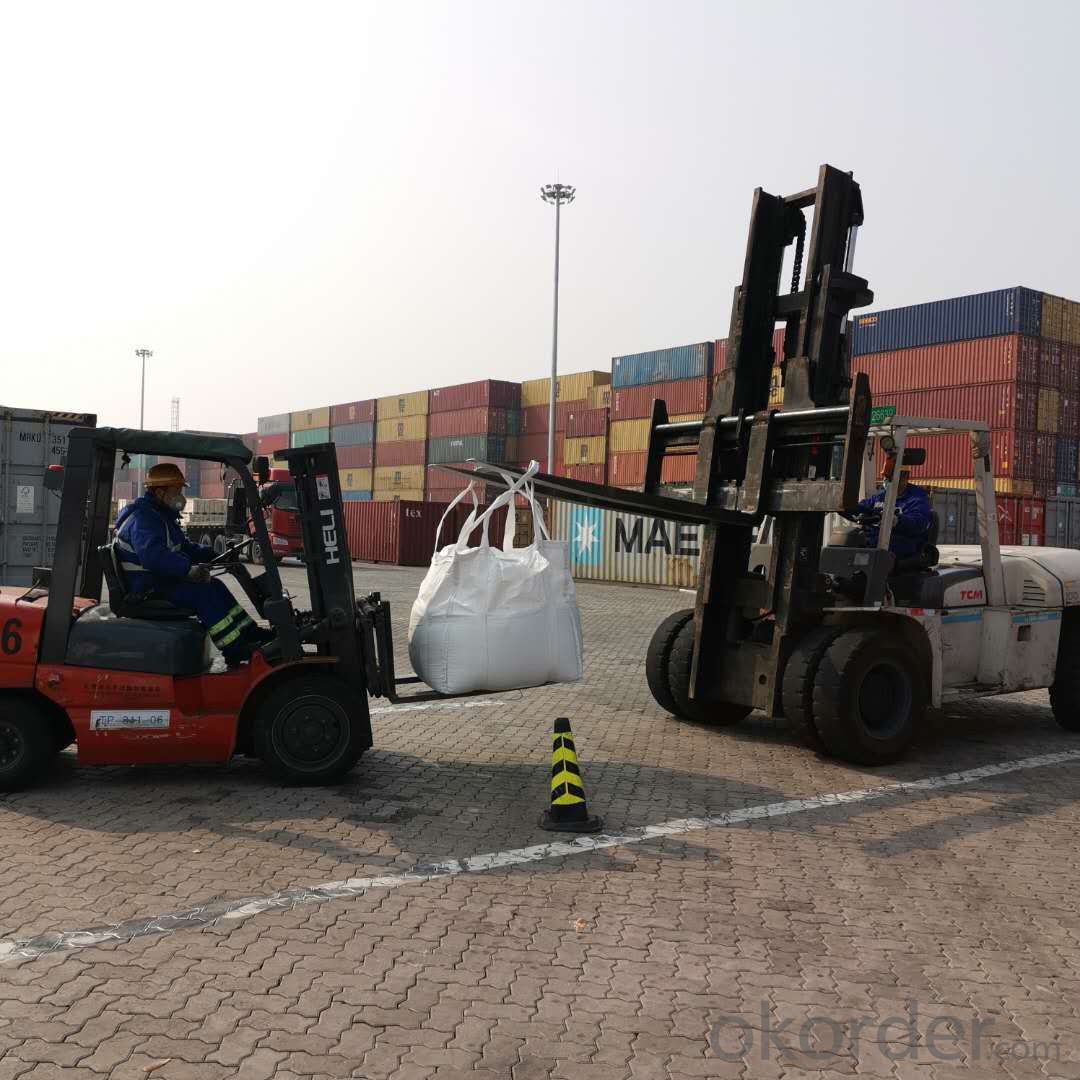
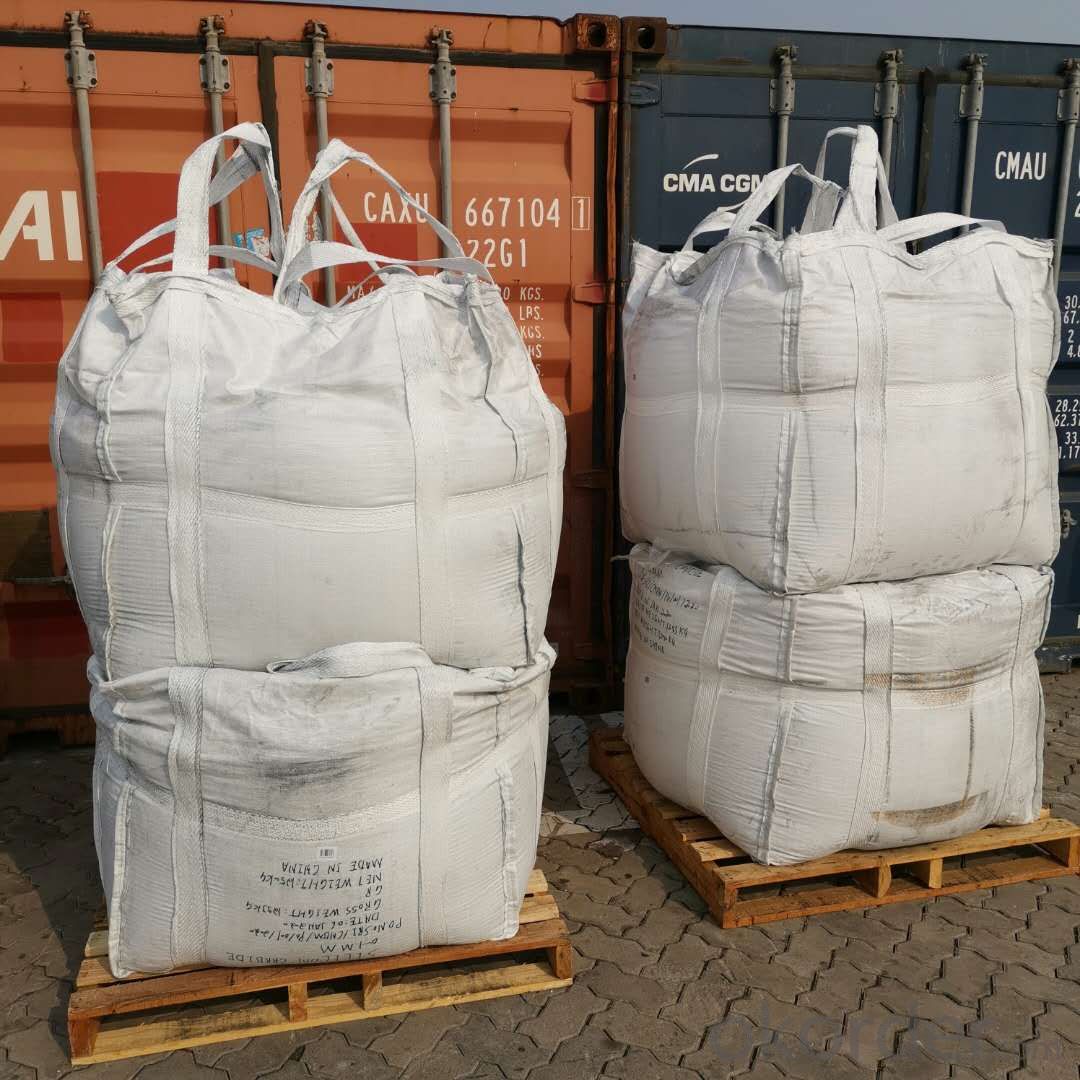
Description:
Silicon Carbide is produced by melting a mixture of silica sand and cokes in ultra high power electric furnaces. Silicon Carbide is chemically stable and has high corrosion resistance, which makes it hard to corrode from exposure to alkali or acid. Silicon carbide is also characterized by its high hardness, outstanding heat resistance, low thermal expansion, resistance to chemical reaction, and ability to function as a semiconductor.
Application:
SiC is suitable for cupola and electric furnace, widely used in iron foundries and in steel mills as deoxidizing agent, especially in ladle furnaces and electric arc furnaces during slag treatment. Silicon carbide can improve the temperature of molten steel rapidly, shorten the melting time, play the role of deoxidizing, increasing carbon and silicon, heating to improve the quality of steel.
Feature:
Black SiC, dissolved in a basic oxygen furnace used for making steel, acts as a fuel.
1.Additional energy liberated allows the furnace to process more scrap with the same charge of hot metal.
2.Silicon Carbide can also be used to raise temperatures and adjust the carbon and silicon content.
3.Silicon carbide / SiC can reduce the cost of production, produce cleaner steel and lower emissions.
Chemical Composition
- Q:Firing high temperature kiln of refractory and internal temperature being as high as 1600 ℃, metal heat exchanger can't use, how to do?
- Directly using silicon molybdenum kiln, the temperature is better. Now using the electricity is cheaper than the price of other fuels.
- Q:What's the organzational structure of refractory material?
- Ingredients (harmful); phase composition. The main components of refractory material include chemical composition and phase composition. The addtional components include main crystal phase, matrix, crystal phase, chemical composition
- Q:Is refractory material harmful to human body?
- Chromium oxide is poisonous in alkaline environment, and the gas produced by heating of asphalt, asphalt and refractory material is poisonous............ Go to the real estate company experts, I can think of these
- Q:What are the physical properties of refractory material?
- The mechanical properties of refractory material include compressive strength, volume density and sclerosing, slag resistance, elastic modulus, thermal shock resistance, oxidation resistance, bibulous rate, fluidity, resilience, bond strength and slump, electrical conductivity, specific heat, heat capacity, the impact strength, linear change, torsional strength, stomatal aperture distribution, resistance to acid, etc. The use performance of refractory material include refractoriness, thermal emissivity, condensation, porosity, coefficient of thermal expansion. Thermal properties of refractory material include thermal conductivity, temperature conductivity, plasticity, the hydration resistance, creep performance. The physical properties of the refractory materials include structure performance, mechanical properties, shear strength, load softening temperature, CO erosion resistance. The structure properties of the refractory materials include porosity, alkali resistance and sintering. The operating performance of refractory material include consistency, tensile strength, the use performance and operating performance, wear resistance, bending strength, thermal properties.
- Q:What's the A class fireproof and thermal inuslation matertial for external wall?
- It is roughly divided into thermal insulation mortar, phenolic foam board, rock wool board, foamed cement board, etc. Insulation mortar is quite good for its simple construction, convenience and low cost, but its production is too simple to make fake products easily. If you want to use the material, it is suggested to find a large plant with complete procedures such as provincal records of production and use, city records, test report above provincial levels, national fire inspection report, design drawings sheets of Department of Construction, etc. If there is lack of any one, it is unsafe. Hope my answer is helpful for you.
- Q:What are the types of advanced refractory?
- it can be divided into two categories of general and special refractories ordinary refractories by chemical properties into acidic, neutral and alkaline. Special refractory composition divided by high temperature oxide, refractory compounds and high-temperature composite materials Furthermore, according to refractoriness can be divided into ordinary refractory products (1580 ~ 1770 ℃), advanced refractory products (1770 ~ 2000 ℃) and grade refractory products (2000 ℃ above). the article can be divided into blocks (standard bricks, shaped bricks, etc. ), special shape (crucible, sagger, pipe, etc.), fibrous (aluminosilicate, zirconia and boron quality, etc.) and a random shape (refractory clay, pouring materials and ramming mixes, etc.) according to the sintering process it can be divided into sintered products, cast products, melt blown products.
- Q:Who can introduce the difference between galvanized fireproof?coatings and steel structure fireproof materials?
- Steel structure with heat galvanization has a process requirement, which is to spray fireproof coatings. Fireproof coatings have different functions and purposes from galvanized process. When the steel surface derusted, it generally needs to brush rich-zinc primer before spraying fireproof coating. Fireproof coating plan itself includes anticorrosion plan, and fireproof coating is just a layer of coating plans, which is an intermediate layer in general. Fireproof coating plan generally includes primer, fireproof coating and finishing paint. Some fireproof coatings can be directly painted on the bare steel elements without primer and finishing paint.
- Q:How many types do refractory bricks have? Where the quality of refractory material is best? What is the model?
- Sinosteel Luoyang (Luoyang Refractory Material Plant in the past): High alumina(mainly blast furnace), Gongyi. There are also a series of high-tech materials (silicon carbide, carborundum, etc.) a major producer of high alumina; silicious: Resistant material for steel, glass furnace, cement kiln); magnesia. Divide from uses and divide from chemical texture; silicious(glass furnace): Xinmi, Hennan Province, Lengshui River, coke oven, etc.). As for the models, Yixing and Changxing in Jiangsu Province: Haicheng, Liaoning Province; silicious, I do not understand your intentions; magnesia (nonferrous, steel refining; magnesia: High alumina brick; Dashiqiao area! Please put it in detail.
- Q:What are the specific steps of stirring the steel ladle castable?
- Steps are as follows. 1 Compulsory mixer is used to stir the castable and bags, rope and other debris can not mix in the castable when stirred. 2, Castable should be unpacked on the scene. Stirred volume depends on the capacity of the mixer. Castable should be accurately measured and put into a blender. 3 The process of first dry mixing and then wet mixing is adopted. After the castable is added to the mixer, it is dryly mixed for 2 minutes, add about 5.2 to 5.5 percent of water and continue to add water while stirring. Water that is 80% of the total should be added, and then decide whether to continue to add or not depending on the consistence (noting that the water must be clean water and sewage can not be used). Then it is wetly mixed for 4 minutes and stirred for not less than 6 minutes at one time, until castable is even. In general, the bottom is slightly dry and the wall of the ladle is slightly dilute (the amount of water is only for reference). 4, The amount of water and mixing time should be controlled strictly when stirred to ensure that the needs of the consistency are met. If castable is too thin, it will seriously affect the quality of the material. The stirred volume, stirring time and water that is added should be consistent and they can not suddenly be thick or suddenly be thin. If the consistency does not meet the requirements, the castable should be put back to the mixer and stirred with appropriate water or dry materials. 5, It should be stirred evenly and casting should finish in 20 minutes, in order to avoid sclerosis, affecting structural strength of ladle lining 6, After each completion of construction, varieties of castable should be changed and the mixer should be cleaned 7, Stirring can stop in halfway. If the mixer breaks down and it can be repaired in a short time, some of the materials have to be removed before the machine is opened. If the machine can be repaired on time, castable refractory should all be removed.
- Q:A chemical problem with refractory materials
- In chemistry, there is never absolute
1. Manufacturer Overview |
|
|---|---|
| Location | |
| Year Established | |
| Annual Output Value | |
| Main Markets | |
| Company Certifications | |
2. Manufacturer Certificates |
|
|---|---|
| a) Certification Name | |
| Range | |
| Reference | |
| Validity Period | |
3. Manufacturer Capability |
|
|---|---|
| a)Trade Capacity | |
| Nearest Port | |
| Export Percentage | |
| No.of Employees in Trade Department | |
| Language Spoken: | |
| b)Factory Information | |
| Factory Size: | |
| No. of Production Lines | |
| Contract Manufacturing | |
| Product Price Range | |
Send your message to us
Metallurgical Silicon Carbide 88 Granular Size 0-10mm
- Loading Port:
- China main port
- Payment Terms:
- TT or LC
- Min Order Qty:
- 25 m.t.
- Supply Capability:
- 500 m.t./month
OKorder Service Pledge
OKorder Financial Service
Similar products
New products
Hot products
Hot Searches
Related keywords
